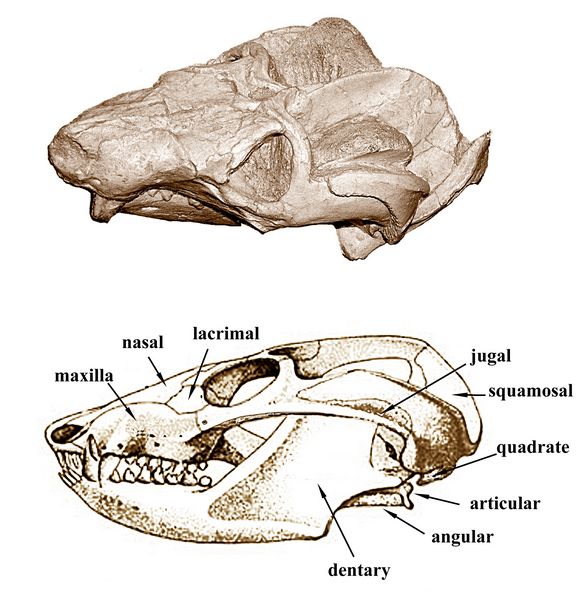Athena Review Image Archive ™
Probainognathus jenseni skull

Skull of Probainognathus jenseni (drawing after Carroll 1988).
Probainognathus was a Late Triassic cynodont ("dog tooth") that lived 235 to 221.5 million years ago in what is now Argentina. Probainognathus jenseni was
first described by Alfred Sherwood Romer in 1970, and named
for its for its advanced jaw articulation. The genus name Probainognathus
means "progressive jaw” in Greek, while the species is named for James
A. Jensen, a Harvard collector. It has been found in two locations in
Argentina, the Chañares Formation in La Rioja Province, and the
Ischigualasto Formation in northwestern Argentina.
Probainognathus jenseni
was a small carnivore with features that link cynodont
therapsids and mammals. The main feature of similarity is jaw joint
articulation, including not only the quadrate and articular bones, but
also the squamosal and dentary bones.
This
development in the jaw joint is an important step in the evolution of
mammals, as this squamosal-dentary articulation is the joint all extant
mammals possess. These findings provide evidence that Probainognathus should be placed on the line ascending towards Mammalia.
References
Carroll, Robert 1988. Vertebrate Paleontology and Evolution. New York, W.H. Freeman and Co.
Romer,
Alfred 1970. The Chañares (Argentina) Triassic Reptile Fauna VI.
A Chiniquodontid Cynodont with an Incipient Squamosal-Dentary Jaw
Articulation. Breviora (344): 1–18.
:
Copyright © 1996-2020 Rust Family Foundation (All Rights Reserved).